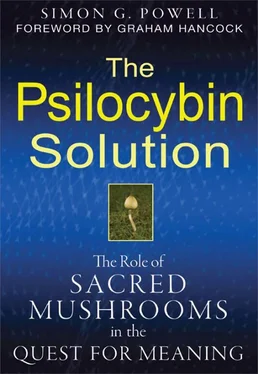The continuous flowing forms that seem to constitute the Universe must therefore be due to the presence of stable patterns that endure from one moment to the next. If one were to take one snapshot slice of reality, a single, all-encompassing chronon as it were, one would not be able to properly discern any patterns; rather, the patterns we observe, like planets and people, are patterned structures that emerge over a multiple succession of such slices. Likewise, I would assume that consciousness seems to flow precisely because it is an informational pattern that endures across successive frames of granular time.
There have been attempts to quantify the hypothetical chronon. For what it’s worth, it is assumed to be the shortest conceivable length divided by the velocity of light. For obvious reasons, I’ll take this definition on trust. Anyhow, this yields what is sometimes called the “Planck time,” and this may represent the elusive chronon. Intuitively it seems there must be discrete time, for otherwise a second could be divided into an infinity of moments. If so, then it is hard to see how time appears to flow at all. An echo of this “timely dilemma” is found in particle physics. Are there any smallest bits, or does scale and size continue indefinitely? It makes more sense to think of a smallest unit of matter (or information) and a smallest unit of time. The case remains open, however, though it is doubtful that any measuring instrument could be built to observe any discrete moves in time. Alternatively, it may still be possible to hold the computational view of the Universe with non-discrete time. This is a task someone else can tackle.
What Gave Our Universe Its Lucky Break?
Once more assuming that reality is indeed a kind of ongoing computation in which language-like information is everywhere being processed, and in which the moment “now” is the leading edge of the computation, we can return to the question of its software, that is, the laws of physics that determine how the Universe develops and progresses. As previously noted, the nature of the Universe is completely tied up with the laws of physics and the initial conditions prevailing at the beginning of time. Now, just how significant or arbitrary are these two sets of variables?
With the Game of Life, Conway’s four rules were specifically designed to ensure that enduring and interesting forms of information could arise as the game proceeded. The four rules were chosen from what is basically an infinite amount of possible rules . Indeed, it took Conway a great deal of time to discover these four rules. If you took just any old rules and applied them to the game, then nothing much of interest would happen. And if anything of interest did crop up, it would only be likely to vanish soon after. It is because Conway’s Life rules were so permanent, precise, and constraining that his game took off and was ultimately able to yield lifelike forms. Moreover, to obtain really interesting results (like getting a virtual computer to emerge), one must carefully engineer the initial state, set it all up in advance so to speak, to ensure that the system develops in the way you wish. Conway was clearly God of the Game of Life, or at least his intelligence was. For a glider speeding merrily about the Life plain, it could do a lot worse than worship the great and holy Conway of Cambridge as its creator.
So, what about the laws of physics and the initial conditions in the real game of life? Just how precise do they need to be to allow us to be here now to reflect upon them? This is somewhat hard to ascertain since we know of only this Universe. We can’t examine other Universes with slightly different laws and initial states to see if they also bring forth life and consciousness. However, many scientists have concluded that for conscious life as we know it to have evolved, the laws of physics and the initial conditions had to have been exactly the way they are. Indeed, it seems that there are many “cosmic coincidences” that have “conspired” to elicit life. In The Mind of God, for instance, Paul Davies has commented upon the combined effects of hydrogen, subatomic neutrinos, and physical law in their impact upon the emergence of organic life.
It is particularly striking how processes that occur on a microscopic scale—say, in nuclear physics—seem to be fine-tuned to produce interesting and varied effects on a much larger scale—for example, in astrophysics. Thus we find that the force of gravity combined with the thermodynamical and mechanical properties of hydrogen gas are such as to create large numbers of balls of gas. These balls are large enough to trigger nuclear reactions, but not so large as to collapse rapidly into black holes. In this way, stable stars are born. {40} 40 5. Davies, The Mind of God, 196.
Davies goes on to describe how some stars eventually explode and how the remains of supernovas (exploding stars) form the basis of planets like the Earth. Apparently, every heavy atom in our bodies had to go through many supernova cycles before ending up as an integral part of terrestrial life. The force of an exploding star derives, in part, from the presence of neutrinos, which Davies refers to as “ghostly entities.”
In other words, the long and complex chain of state transitions of the Universe that eventually yielded life and consciousness was determined by the precise manner (both microscopic and macroscopic) in which the universal dialogue unfolded. An appropriate set of grammatical rules/ physical laws that would eventually generate life and consciousness was seemingly “set up” at the very beginning of time. Once the laws of physics and an initial input state had been specified, they eventually went on to facilitate the evolution of planets and people made of stardust. Even dour Mr. Skeptic must concur that this has been a somewhat fortuitous turn of events. One has to be near dead not to marvel at least a little at our conscious existence at this stage of the Universe’s evolution.
Consider also the so-called constants of Nature, like the mass of the electron and Newton’s gravitational constant. Their value is considered absolutely precise, and they determine how the language of physics is conducted. These constants also seem to be fine-tuned to allow organic life to emerge. If their value was but a fraction different, then life as we know it could not exist. Some scientists have introduced the strong anthropic principle to account for this phenomenon. This principle holds that the fundamental constants of Nature have the value they do precisely to allow life and consciousness to develop somewhere and somewhen in the Universe. It sounds like design. Needless to say, other scientists balk at such talk, preferring to seek a less astounding explanation.
The “life-friendly” nature of Nature is seen elsewhere. The element carbon, which is so crucial for life on Earth, is generated inside stars by an extraordinary series of “lucky flukes.” It just so happens that normally rare high-speed collisions of three helium nuclei are favored to occur within stars due to fortuitous quantum effects. The resulting carbon that is formed eventually gets blasted out into space when stars go supernova. Because carbon is the basis of all organic chemistry, we really can thank our “lucky stars” for its biologically constructive presence here on Earth.
Even the expansion of the Universe is precision-based so as to allow time enough for galaxies, planets, and life to form. If the expansion of the Universe were too fast, then galaxies could not form, and if the expansion were too slow, it would recollapse before anything interesting happened. According to some estimates, if the velocity of expansion in the first second of the big bang was a mere trillionth slower, the Universe would have collapsed within fifty million years, during which time the temperature would have remained above ten thousand degrees, clearly a state unfit to yield life as we know it.
Читать дальше










